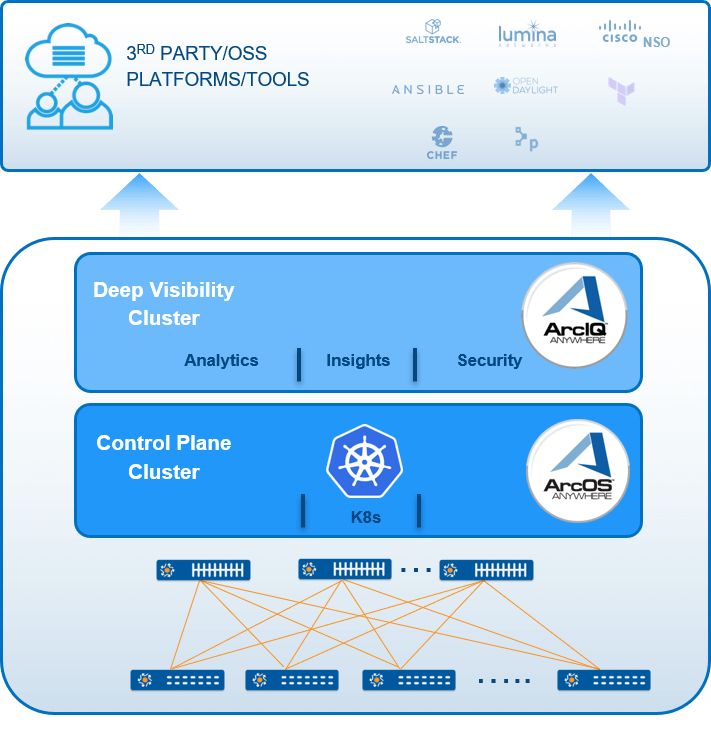We are witnessing a period of incredible transformation with trends like 5G, edge computing underpinned by explosive growth in rich media content, hyper-connected users/devices, and mobile traffic. At the same time, providers and enterprises alike are also contending with rising customer expectations around end-user experience, newer services, and the need for new monetization models – all the while trying to flatten or even bend the cost-curve.

These business imperatives are changing how network operators build out their architectures with applications and data being distributed out to the edges. CSPs are building out Multi-access Edge Computing (MEC) access points in radio towers, central offices, metro access, and other such locations close to the end consumer and ultimately resulting in massive and organic increase in network port counts.
The traditional approach of addressing these demands in various points in the network – data center WAN edge, backbone, provider edge, metro edge, access – would be to deploy a chassis-based solution like below (Figure 2). This leads to the painfully familiar, and now unsustainable, set of issues such as:
- CapEx costs (due to expensive, proprietary chassis-based platforms from limited supply base)
- Upfront OpEx costs related to power, cooling and real estate
(some of these chassis literally need the walls to be broken in to be rolled in, and weigh 1300lbs when fully loaded…!) - Poor software quality due to complex, legacy architectures
- Limited scale due to physical constraints of chassis designs
- Long qualification cycles upon any kind of upgrade (whether software or hardware)
- Expensive vendor professional services teams to debug failures including drops/grey failures or hardware failures

These issues fundamentally drive down infrastructure resilience, customer experience, service agility, and ultimately business profitability for CSPs and enterprises. That’s what makes the legacy offerings completely antithetical to today’s, highly distributed and hyper-connected, digital-first businesses. These businesses deploy software-centric, virtualized, and open systems that support new delivery mechanisms, agile deployments, and dynamic pricing models.
It is time for the routing industry to finally break free from the traditional constraints and enter into this digital-first era as well.
Introducing Arrcus VDR
Arrcus, the hyperscale networking software company, adds the VDR (Virtualized Distributed Router), the industry’s first virtualized, distributed, massively scalable routing platform series to its portfolio of products.
Arrcus VDR transforms the monolithic chassis into a distributed system with an off-device virtualized, cloud-native control plane and a de-coupled spine-leaf ‘Clos’ data plane that can scale to thousands of 100G and 400G ports – up to 10x more scalable than traditional chassis-based systems while eliminating the life-cycle management tax associated with those legacy solutions.
For the first time, with Arrcus VDR, customers can deploy an innovative, open, resilient system that addresses all the issues with traditional chassis while delivering secure distributed connectivity and maximum deployment flexibility at the lowest cost of ownership.
The Power of One – Simple, Scalable, Seamless
This new paradigm is powered by ArcOS, Arrcus’s proven, hyper-scalable and resilient microservices-based network operating system. As compared to the current chassis-based offerings; the Arrcus VDR experience is:
- Simple: Experience the power of single point of management/control and open, standards-based programmatic APIs
- Scalable: Grow your network from 4Tbps (40x100G) to 768Tbps (7680x100G) with current generation silicon while enabling control plane and services to scale independent of the underlying data plane
- Seamless: Common architecture, single software (ArcOS) connectivity across data center, multi-cloud and edge workloads

Unlike with the other alternatives in the market, this is the same ArcOS that’s deployed across MSDC, peering, route-reflector use cases (to name a few) with support for the broadest range of (routing AND switching) state-of-the-art merchant silicon and virtual form-factor offerings.
Discover the economics of hyperscale networks
In summary, businesses are rapidly moving towards a flexible, intelligently, orchestrated future enabled by technologies such as 5G, multi-cloud, and edge computing. The underlying networks need to also transform to support this future and the current approaches are completely inadequate. Leveraging first principles-based ArcOS, state-of-the-art merchant silicon and a pay-as-you-grow model, Arrcus VDR is the only economical and flexible solution that delivers any service, anytime, anywhere and meets and exceeds modern network infrastructure needs.
Learn more about Arrcus VDR
Check us out at https://www.arrcus.com/products/vdr/ or schedule a live demo here: https://www.arrcus.com/demos/vdr/.